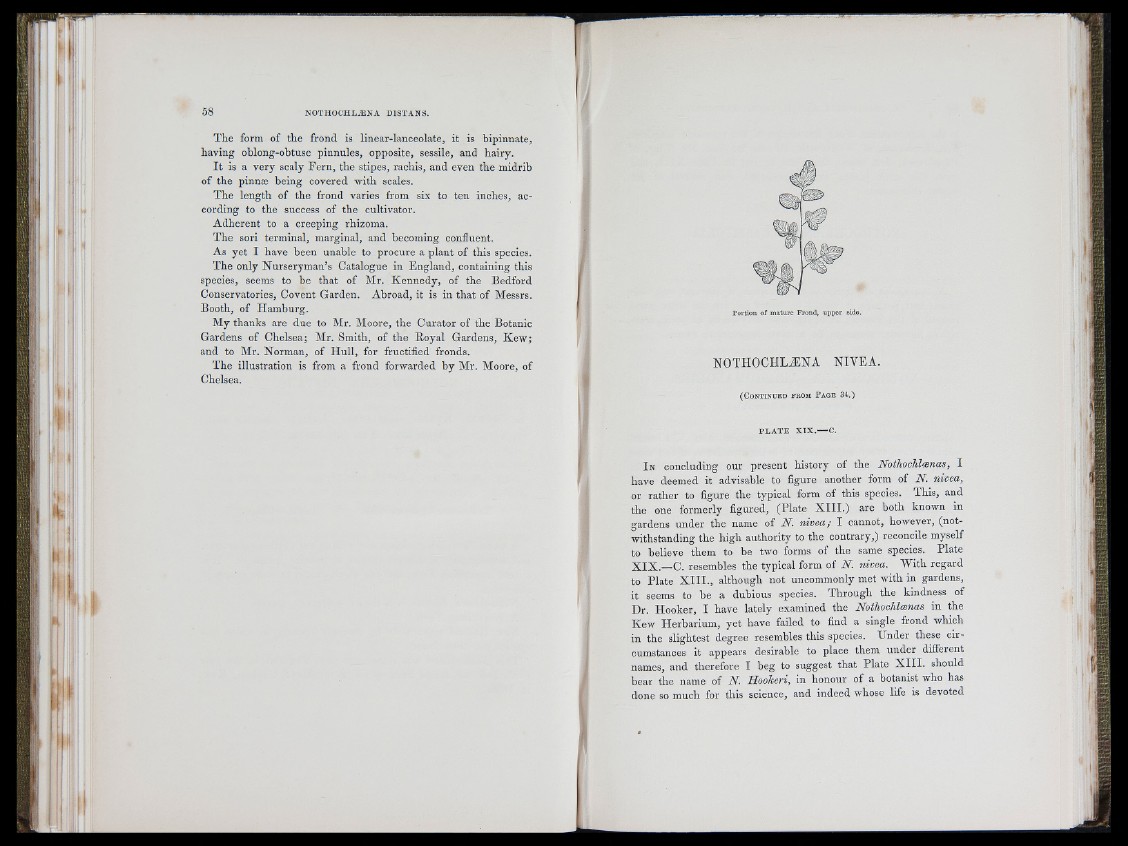
The form of the frond is linear-lanceolate, it is hipinnate,
having oblong-obtuse pinnules, opposite, sessile, and hairy.
I t is a v e ry scaly F e rn , the stipes, rachis, and even the midrib
o f the pinnæ being covered with scales.
T h e length of the frond varies from six to ten inches, according
to the success of th e cultivator.
A d h e ren t to a creeping rhizoma.
The sori termina l, marginal, and becoming confluent.
As yet I have been unable to procure a p lan t of this species.
T h e only N u rse rym an ’s Catalogue in F n g la n d , containing this
species, seems to be th a t of Mr. K en n ed y , of the Bedford
Conservatories, Covent Garden. Abroad, it is in th a t of Messrs.
Booth, of H am b u rg .
My thanks are due to Mr. Moore, th e Cu ra to r of the Botanic
Gardens of Chelsea; Mr. Smith, of the Roya l Gardens, K ew ;
and to Mr. Norman, of H u ll, for fructified fronds.
T h e illustration is from a frond forwarded b y Mr. Moore, of
Chelsea.
NOTHOCHLÆNA NIVEA.
( C o n t i n u e d f r o m P a g e 3 4 . )
P L A T E X TX .—-C.
I n concluding our p resent history of the Nothochhxnas, I
have deemed it advisable to figure another form of N . nivea,
or ra th e r to figure the typical form of this species. This, and
th e one formerly figured, (P la te X I I I . ) are b oth known in
gardens un d e r the name of N . nivea; I cannot, however, (n o twithstanding
the h ig h authority to the contrary,) reconcile myself
to believe them to be two forms of the same species. Pla te
X IX .—C. resembles the typical form of N . nivea. W ith reg a rd
to P la te X I I I . , although not uncommonly met with in gardens,
it seems to he a dubious species. T h ro u g h th e kindness of
Dr. H o o k e r, I have lately examined the Nothochlmnas in the
K ew H e rb a rium , y e t have failed to find a single frond which
in th e slightest degree resembles this species. U n d e r these c ircumstances
it appears desirable to place them u n d e r different
names, and therefore I beg to suggest th a t P la te X I I I . should
h ear the name of N . Hookeri, in honour of a botanist who has
done so much for this science, and indeed whose life is devoted